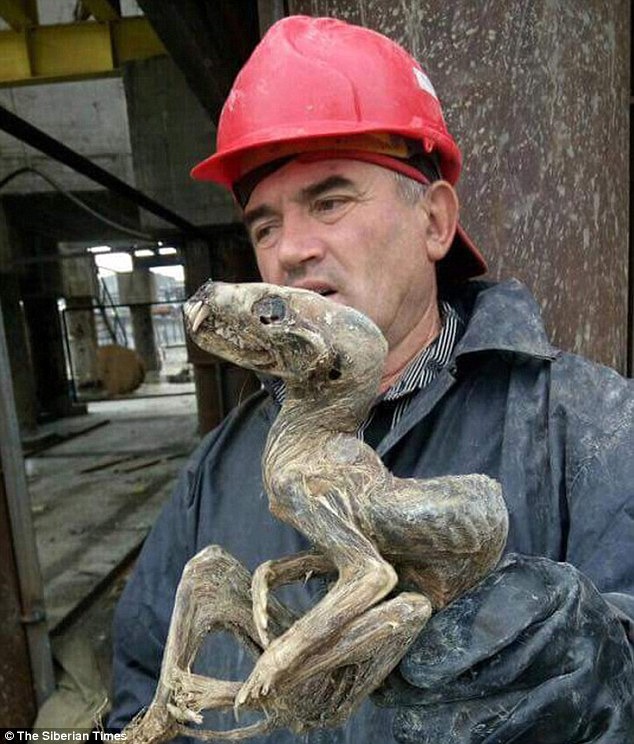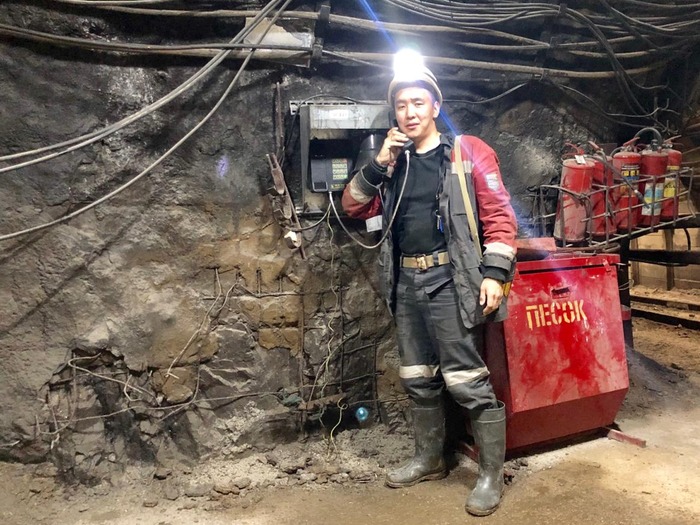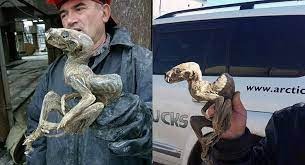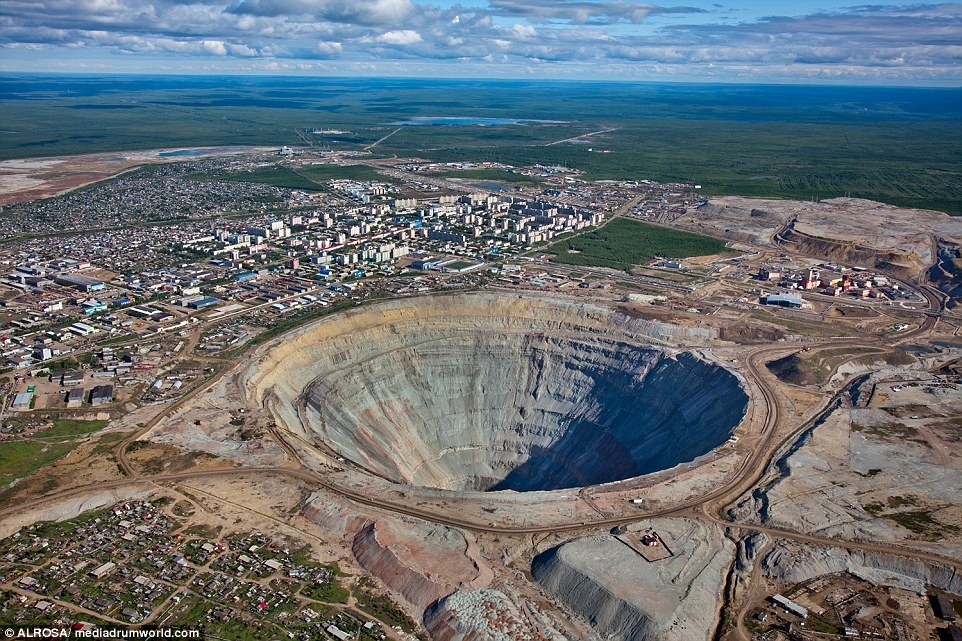Pulled from the icy ground at a diamond mine in Siberia, it looks like a creature from another world.
The mummified remains of what appears to be a carnivorous mammal were discovered encased in the sandy sediment at the diamond mine in Udachny, 1,160 miles north west of Yakutsk in Russia.
Miners who found the strange creature have been baffled by it, describing it as a ‘monster mummy’.

The weird ‘monster mummy’ has been found in Siberia by diamond miners, who have been left baffled by what it could be
However, experts believe it may be a fox, pine marten or an otter.

The discovery has also sparked some wild claims among locals, including some who believe it is some kind of new species of dinosaur, according to the Siberian Times.
But with a long spine, paws and a mixture of canine and molar teeth, together with tufts of fur, the creature is more likely to a mammal that became preserved in the sands.

Other theories have suggested it could be a wolverine, a small dog or a fox.
The mystery animal is due to be taken from from Udachny – literally meaning ‘lucky’ – to Yakutsk for examination by scientists.
Udachny, which means ‘Lucky’, is famous for its pipe diamond deposit, where 1.5 million tons of gemstone ore is dug out of the sandy deposits each year.
First discovered in 1955, the site has been mined since the 1960s and is now one of Russia’s biggest diamond mines.

In 1974, a 1.7 kiloton atomic bomb was detonated 98 metres (322 ft) underground to create the basin for the diamond mine.
The diamonds are found in a rock called kimberlite that form vertical pipe-like structures as a result of gas bursts through the crust.
The diamondiferous sands where the creature was unearthed are reported to date from the Mesozoic Era from about 252 to 66 million years ago.
However, it is likely the mummified creature is a more recent addition. The cold dry climate – which can reach -46°F (-43°C) in the winter, could have helped to preserve some of its body.
Leave a Reply